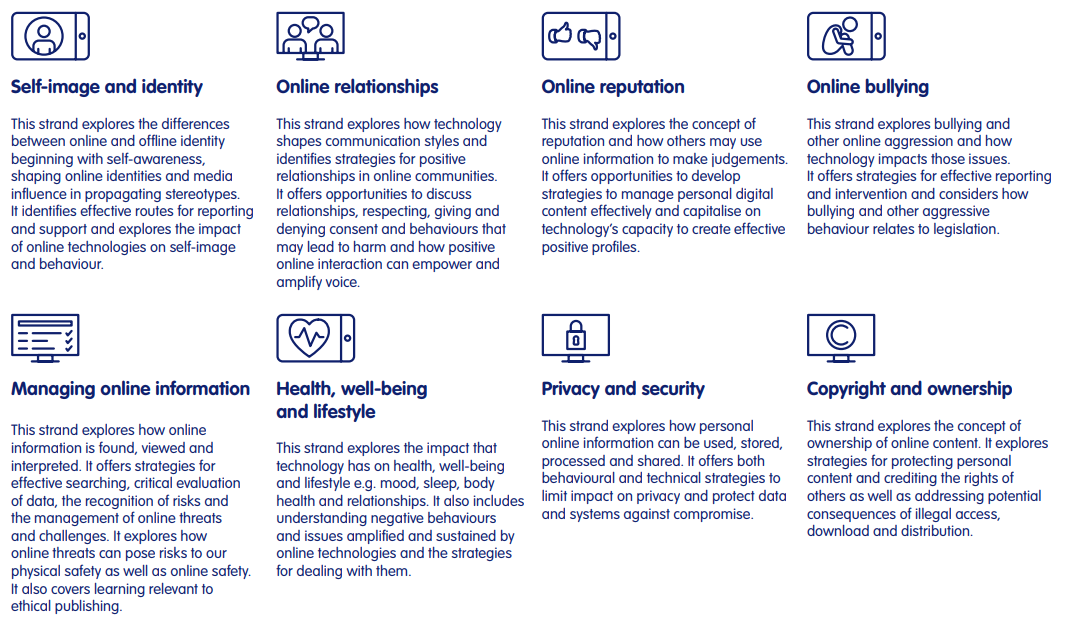Teaching Online Safety
Oct. 28, 2024
Today’s pupils are growing up in an increasingly complex world, living their lives seamlessly on and offline. This presents many positive and exciting opportunities, but also challenges and risks.
We want schools to equip their pupils with the knowledge needed to make the best use of the internet and technology in a safe, considered and respectful way, so they are able to reap the benefits of the online world.
Teaching Online Safety in Schools Guidance
.gov.uk
Why Online Safety is Crucial for Primary School Children
The digital world is continuing to expand, with new exciting technologies creating many more opportunities. But these opportunities sadly include many risks to children, and teaching online safety is a crucial part of the primary school curriculum.
Children today are exposed to the digital world at a much earlier age, and while there are safety features on devices that teachers and parents can use, risks are becoming much more sophisticated and more difficult to perceive - especially for children.
The government guidance on online safety has emphasised the need for schools to educate students about safe and appropriate use of technology and integrating online safety across the curriculum using the Education for a Connected World Framework.
What is the Education for a Connected World Framework?
Education for a Connected World is a framework created by the UK Council for Internet Safety which outlines 'what a child should know in terms of current online technology, its influence on behaviour and development, how to get support, and what skills they need to be able to navigate it safely.' (Education for a Connected World framework 2020)
It focuses specifically on eight different aspects of online education:

Education for a Connected World
Online Safety for Primary Schools
Purple Mash's brand new online safety scheme of work, 2BeSafe, covers each of the strands from the Education for a Connected World framework. 2BeSafe offers a comprehensive coverage of these requirements for primary schools starting from Reception up to Year 6.
Each objective has 15-to-20 minute sessions containing activities to promote discussion, greater thinking and deeper reflection in order to raise the profile of the importance of staying safe online. All sessions contain a teaching PowerPoint and easily accessible resources in order to save teachers' time.

The 2BeSafe sessions within Purple Mash
Purple Mash subscribers can access all of the sessions in the Teachers Area as part of their subscription, but four sessions are included in our FREE downloadable Online Safety Pack:
- Online Relationships - Year 1
- Health, Wellbeing and Lifestyle - Year 3
- Online Reputation - Year 4
- Self-Image and Identity - Year 6
How to Integrate Online Safety Across the Primary School Curriculum
Many of the sessions in 2BeSafe can be used as part of Computing or PSHE teaching and you may choose to teach them as such:
Computing
- Online Reputation
- Managing Online Information
- Privacy and Security
- Copyright and Ownership
PSHE
- Self-Image and Identity
- Online Bullying
- Health, Wellbeing and Lifestyle
- Online Relationships
While strands like Copyright and Ownership may be used in research-based lessons, like English or History. Many of the sessions provide good stimulus for discussion can also be built on to create a debate lesson. Others will work well being dramatised in a role-play or hot-seating.
Supporting Parents with Online Safety at Home
Schools can play an active role in ensuring children are consisently protected in the digital world by providing parents with resources and guidance on managing their children's online activities.
One excellent resource is the free Digital Parenting guide by 2Simple, which offers practical tips on keeping children safe online, monitoring screen time, and discussing internet risks with them. Additionally, Purple Mash subscribers have access to a comprehensive guide specifically designed to help parents support their child's well-being, covering key topics like managing social media use, setting boundaries, and identifying potential online risks. By sharing these tools, schools can empower parents to foster a safer and healthier online environment at home.